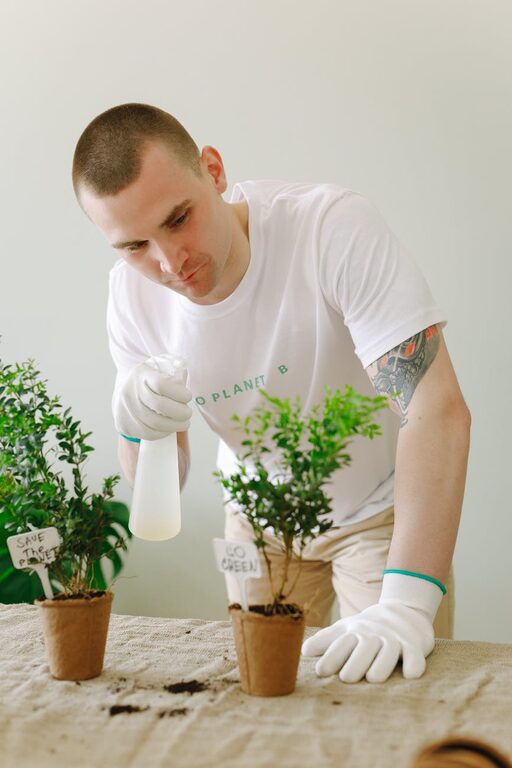Bringing houseplants into your living space can brighten a room, improve air quality, and boost your mood. However, keeping these plants healthy requires a bit of knowledge and care. Whether you are a seasoned plant enthusiast or just starting your indoor garden journey, these tips will help your houseplants thrive.
Understanding Your Houseplants’ Needs
Each plant species has unique requirements. To give your plants the best care, begin by identifying what they specifically need for light, water, soil, and humidity.
Light Requirements
Light is crucial for photosynthesis, which keeps your plants alive and vibrant. Here’s how to manage:
– Bright, indirect light: Plants like spider plants, pothos, and ferns prefer bright but filtered sunlight.
– Direct sunlight: Succulents and cacti love several hours of direct sunlight daily.
– Low light: Some plants, like snake plants and ZZ plants, can tolerate and even thrive in lower light conditions.
Position your plant accordingly, near windows or under grow lights if needed. Always observe your plants for signs of light stress, such as leaf burn or leggy growth.
Watering Wisely
Over- or under-watering are common mistakes. Follow these guidelines:
– Check soil moisture: Before watering, stick your finger about an inch into the soil. Water only if it feels dry.
– Use the right pot: Ensure pots have drainage holes to avoid water accumulation.
– Water thoroughly: When watering, do so slowly until you see water drain from the bottom of the pot.
– Understand your plant’s water needs: Tropical plants typically like consistently moist soil, while succulents require drying out between waterings.
Soil and Fertilization
Healthy soil provides plants with nutrients and drainage.
– Use a high-quality potting mix suited for your plant type.
– Refresh the top layer or repot the plant every year or two.
– Fertilize during the growing season (spring and summer) with a balanced, water-soluble fertilizer following package directions.
– Avoid fertilizing in dormant periods (usually fall and winter).
Creating the Right Environment
Indoor conditions can be different from outdoor elements, so consider these factors.
Temperature and Humidity
Most houseplants prefer temperatures between 65°F and 75°F (18°C to 24°C).
– Avoid placing plants near drafts, heaters, or air conditioners.
– Increase humidity for tropical plants by misting leaves, using a humidifier, or placing a tray of water with pebbles near the plant.
Air Circulation
Good air circulation helps prevent fungal diseases and promotes strong growth. Place plants where they can get gentle air movement but avoid harsh drafts.
Regular Maintenance for Happy Plants
Ongoing care helps keep your houseplants looking their best.
Pruning and Cleaning
– Remove dead or yellowing leaves to encourage new growth.
– Trim leggy stems to shape the plant and promote bushier growth.
– Clean dust off leaves with a damp cloth or gentle shower to improve photosynthesis.
Pest Monitoring and Treatment
Indoor plants can attract pests like spider mites, aphids, or scale.
– Regularly check leaves and stems for signs of pests.
– Treat infestations early using insecticidal soap, neem oil, or by wiping pests off manually.
Tips for Specific Plant Types
Succulents and Cacti
– Use well-draining, sandy soil.
– Water sparingly, allowing soil to dry completely between waterings.
– Provide plenty of bright light.
Tropical Plants
– Keep soil consistently moist but not soggy.
– Maintain higher humidity.
– Provide bright, indirect light.
Low-Light Plants
– Water less frequently as growth may slow.
– Avoid direct sunlight that might scorch leaves.
Troubleshooting Common Problems
Yellow Leaves
Causes:
– Overwatering
– Poor drainage
– Too much direct sunlight
Drooping or Wilting
Causes:
– Lack of water
– Root rot due to excess moisture
– Sudden changes in temperature or light
Brown Leaf Tips
Causes:
– Low humidity
– Excess fertilizer buildup
– Inconsistent watering
Keeping an eye on your plant’s appearance and responding quickly to problems will save your plants from long-term damage.
Conclusion
Caring for houseplants can be a rewarding experience that brings life and color to your indoor space. By understanding their needs related to light, water, soil, and environment, and maintaining regular care, you can enjoy thriving, healthy plants year-round. Remember, patience and observation are key—each plant will communicate what it needs with a little attention.
Happy planting!



